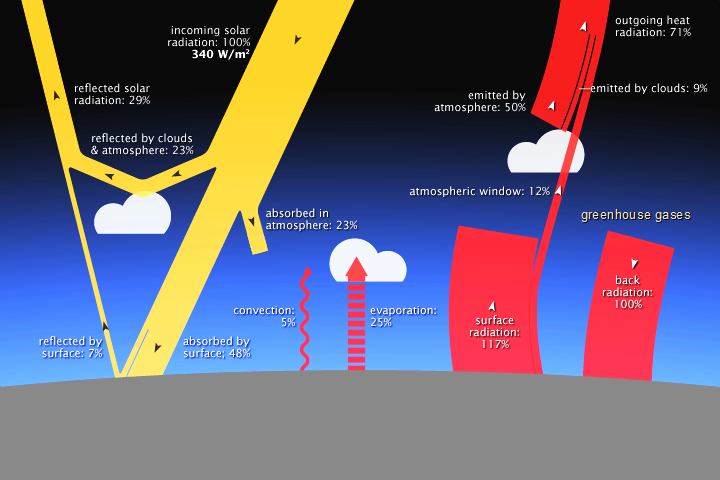What does this indicator reflect?
CO2 Equivalent Emissions

Contents
RELEVANCE – Why does it matter for Switzerland?
Greenhouse gas (GHG) emissions from human activities are very likely to be the main cause of the currently observed global warming. In turn, a temperature increase on earth is very likely to result in social, economic and environmental damage associated with an increase of extreme weather events, sea level rise and ocean acidification. For Switzerland, the melting of glaciers and permafrost are amongst the most critical direct environmental impacts of global warming, potentially leading to severe socio-economic impacts.
By ratifying the Kyoto protocol in 1997 Switzerland committed to setting internationally binding emissions reduction targets.[1] Switzerland aims to reduce GHG emissions by 20% relative to 1990 by 2020.[2]
Reducing GHG emissions is also important to the economy as a whole. For example a carbon tax of currently CHF60/tonne (up from CHF36 in 2012) applies to heating oil and gas, which corresponds to a total annual revenue for the Confederation of about CHF740 million. Future policy measures to mitigate global warming are likely to increasingly penalise the emissions of greenhouse gases.
SWISS & GLOBAL CONTEXT
SWISS CONTEXT
• The energy sector is responsible for around 80% of the Swiss GHG emissions
• Total CO2 emissions from the energy sector dropped between 1990 and 2012 from 40.9 to 38.4 MtCO2eq/year.
• The national 10% reduction target for emissions from the energy sector (for the 2008-2012 average compared to 1990), as formulated under the Swiss CO2 law, was not met.[4] The 6.2% shortfall was however compensated through the acquisition of carbon credits.
• The per capita emissions from the energy sector dropped from 6.3 to 5.6 tCO2eq/year between 1990 and 2009.[3]
GLOBAL CONTEXT
• The energy sector accounts for 65% of all anthropogenic GHG emissions. Agriculture and land use change account for the rest.[3]
• Total CO2 emissions from the energy sector increased between 1990 and 2009 from 22,741 to 30,698 MtCO2eq/year.[3]
• The per capita emissions from the energy sector increased from 4.4 to 5.6 tCO2eq/year between 1990 and 2009.[3]